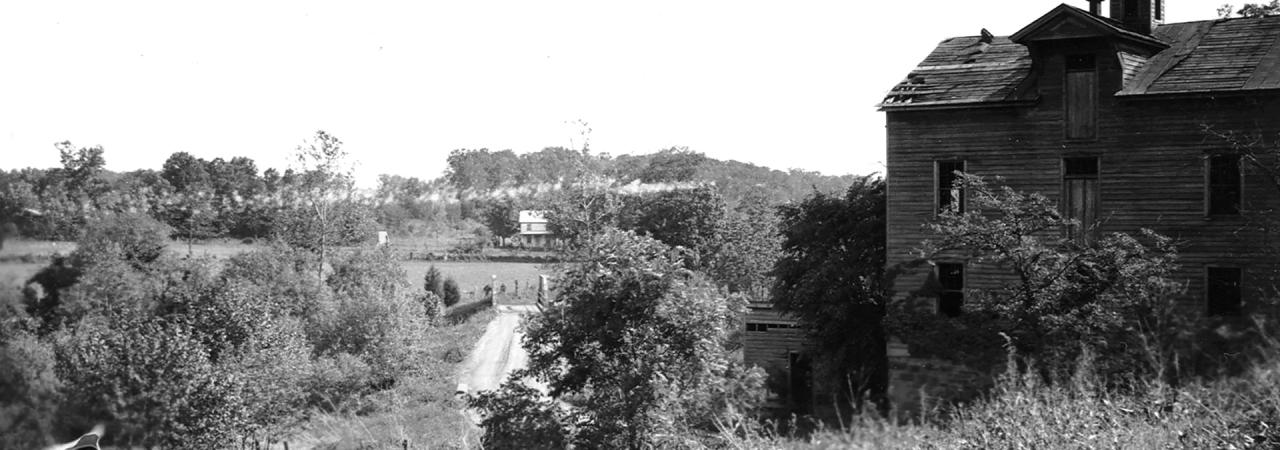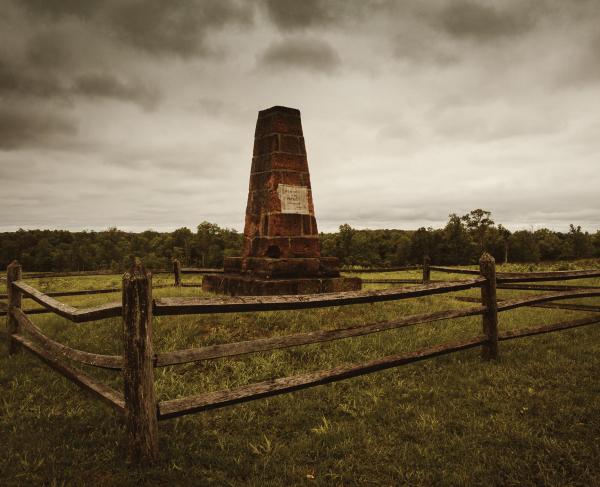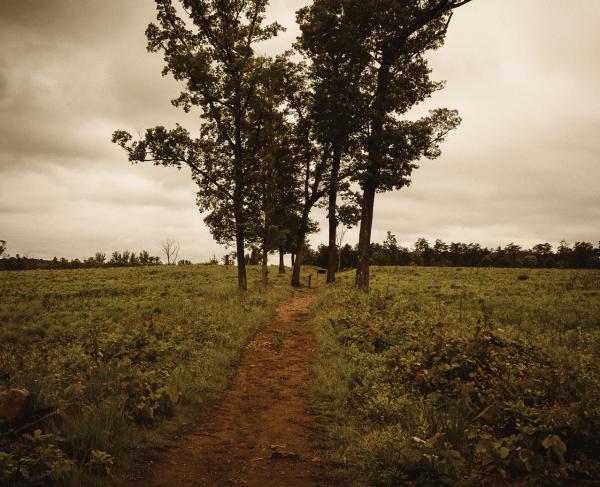
Ca. 1930 photograph looking south from Sudley Mill toward our latest target tract (directly across the early 20th-century bridge over Catharpin Run)
The area around Catharpin Run in the vicinity of Sudley Springs and Sudley Church played a role in both the First and Second Battles of Manassas. That dual significance makes preservation opportunities in this region especially exciting.
Although this area did not witness any fighting at the time of First Manassas, Sudley Church served as a Union army field hospital during the battle. Wounded left behind during the Union retreat there were subject to capture by J.E.B. Stuart’s 1st Virginia Cavalry.
All those that died of wounds at Sudley Church were buried in the vicinity, typically hasty interments in random locations, since a formal cemetery was not established until 1896. Later that fall, the 21st Georgia used Sudley Church as a hospital for their sick during the fall of 1861. Any Georgians that died of disease may well have also been buried in the vicinity of the church.
Wartime graves are known to exist on the east side of Sudley Road, opposite the church, within the national park. In March 1862, shortly after the Confederate army withdrew from the area, George N. Barnard and James Gibson photographed two children from the Thornberry family, which lived nearby, kneeling next to a mass grave on the slope behind Sudley Church. This site is either on or very near the tract the Trust is now working to save.
During the Second Battle of Manassas, Maj. Gen. Thomas J. “Stonewall” Jackson established a defensive line stretching nearly two miles along an unfinished railroad grade, the planned Independent Line of the Manassas Gap Railroad. Jackson’s left flank, held by Brig. Gen. Maxcy Gregg’s brigade of A.P. Hill’s division, rested on a rocky knoll near Sudley Church, again on or in the immediate vicinity of the land we are seeking to save.
Gregg’s South Carolinians resisted multiple attacks throughout the day on August 29, 1862. The heaviest attack was delivered by Maj. Gen. Phil Kearny’s entire division late in the afternoon, which managed to push A.P. Hill’s left flank back some 300 yards beyond the unfinished railroad, into our target property, and almost to the Groveton-Sudley Road, where Jackson had parked his supply train. The arrival of reinforcements from Jubal Early’s brigade and growing darkness ultimately saved that part of Jackson’s line from total destruction. During this contest, four companies of the 3rd Maine regiment, acting as skirmishers to cover the extreme right flank of Kearny’s line, advanced to the vicinity of Sudley Church and likely occupied part of our latest target tract for a brief period. Among the casualties on the Confederate side during this attack was Lt. Col. Daniel Ledbetter of Orr’s Rifles, who was evacuated to Bushy Park farm near Catharpin, where he died of his wounds and was buried. His remains were reinterred at the Sudley Church cemetery in the 1990s.
Overnight Kearny’s troops withdrew from the hard-earned ground they had gained, and the following day, August 30, only relatively minor skirmishing occurred in this sector.
Support our exciting preservation project at Manassas at www.battlefields.org/4acreManassas.
Related Battles
14,462
7,387
2,896
1,982



